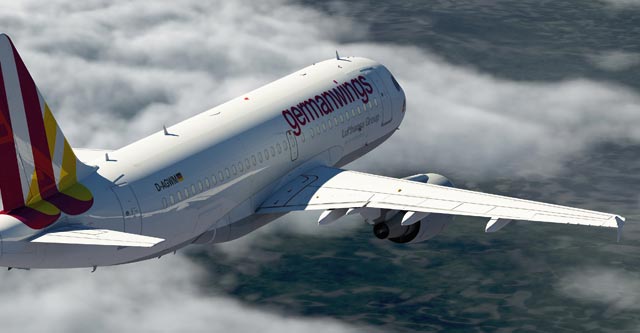Lufthansa will move 52 aircraft to its low-cost subsidiary Germanwings for the planned transferral of its decentralised European network next year.
Starting 1 July, Germanwings will gradually take control of Lufthansa's continental routes outside its main hubs in Frankfurt and Munich over a two-year transitioning period.
The equipment transfer will cover 29 Airbus A319s and A320s from Lufthansa's mainline fleet and 23 Bombardier CRJ 900 regional jets. The latter are - and will continue to be - operated by Lufthansa's regional subsidiary Eurowings, however.
 |
|---|
| Germanwings |
Germanwings fleet will thus grow to around 90 aircraft, with the number of travellers set to increase to around 16 million a year.
This would be around 20% of Lufthansa's passenger volume, while Germanwings is expected to generate around €1.8 billion ($2.3 billion) in revenues, roughly 10% of the mainline carrier's turnover.
The group will invest around €30 million in repainting the aircraft and adapting the cabins of Lufthansa aircraft to the low-cost subsidiary.
Germanwings employs Lufthansa's slim economy class seat, which was introduced to increase capacity in the mainline carrier's European fleet two years ago.
Some 12 Germanwings aircraft still need to be equipped with the new seat model, however.
As part of the operational transfer, Lufthansa will move around 1,000 jobs to the low cost subsidiary. This will comprise around 450 cabin crew, 360 pilots and just under 200 ground staff positions.
The employees will keep their current salary levels, but will have to work under Germanwings terms and conditions with higher productivity levels.
Carsten Spohr, head of Lufthansa's passenger airline business, expects that especially the required flight and cabin crew positions at Germanwings will be filled with new employees while the respective Lufthansa staff - which is based in secondary locations such as Hamburg - will either move to Frankfurt or leave the company.
Spohr concedes that staff morale within Lufthansa deteriorated after the airline revealed its "Score" restructuring programme earlier this year and that the management had made "some mistakes" especially in terms of internal communications.
Given the media scrutiny of the cost-cutting programme, the airline avoided written communication over concerns that such documents could be made public. But due to the airline's size with more than 20,000 flight and cabin crew, he says that reaching employees through group meetings takes much longer.
Spohr insists that the low point in staff morale was passed in the summer when cabin crew went on strike.
Source: Air Transport Intelligence news
















